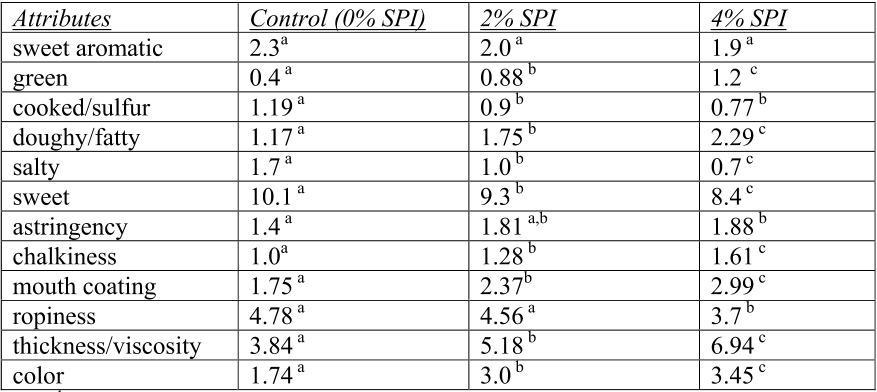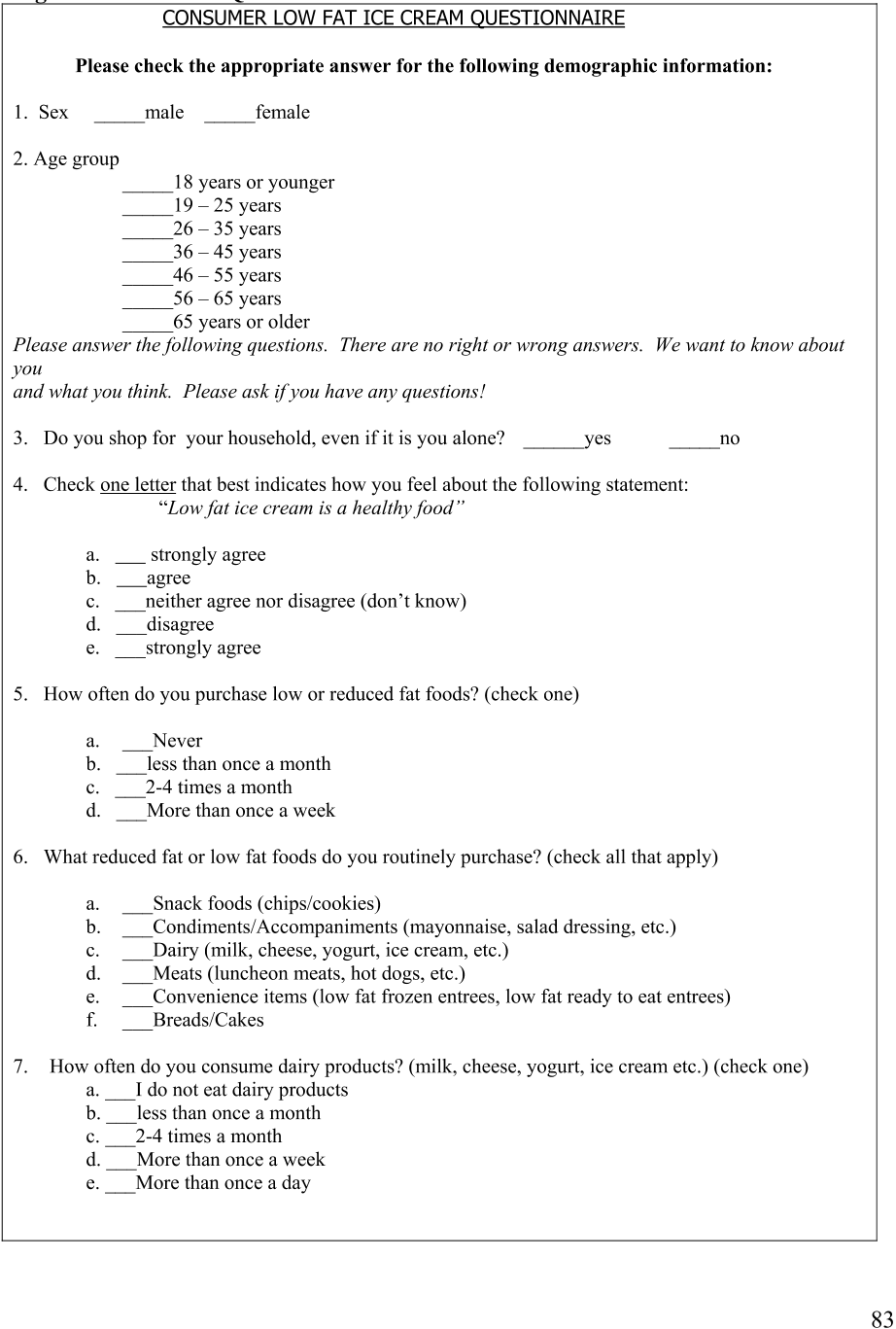




Did you find this useful? Give us your feedback

















...Similar findings were observed by Friedeck et al. (2003) [12], they observed that the incorporation of SPI in the Ice Cream mixes had significantly inferior color than control mixes....
[...]
...Present study is also in agreement with Friedeck et al. (2003) [12] who reported that the sweet taste decreased with increasing SPI....
[...]
...This is in agreement with the study of Friedeck et al. (2003) [12] who reported that higher intensities of green/grassy and doughy/fatty flavors were detected in the two per cent and four per cent SPI incorporated ice cream mixes when compared to control mixes....
[...]
...Different ingredients as soy protein (Friedeck et al. 2003), flaxseed oil, citrus fiber and hazelnut skin and flour (Dervisoglu 2006) were studied as an ingredients for the development of new ice cream formulation with preferred flavor, taste, and texture characteristics....
[...]
...192 protein isolate from 0% to 4% (Friedeck et al., 2003)....
[...]
5,192 citations
480 citations
251 citations
204 citations
179 citations